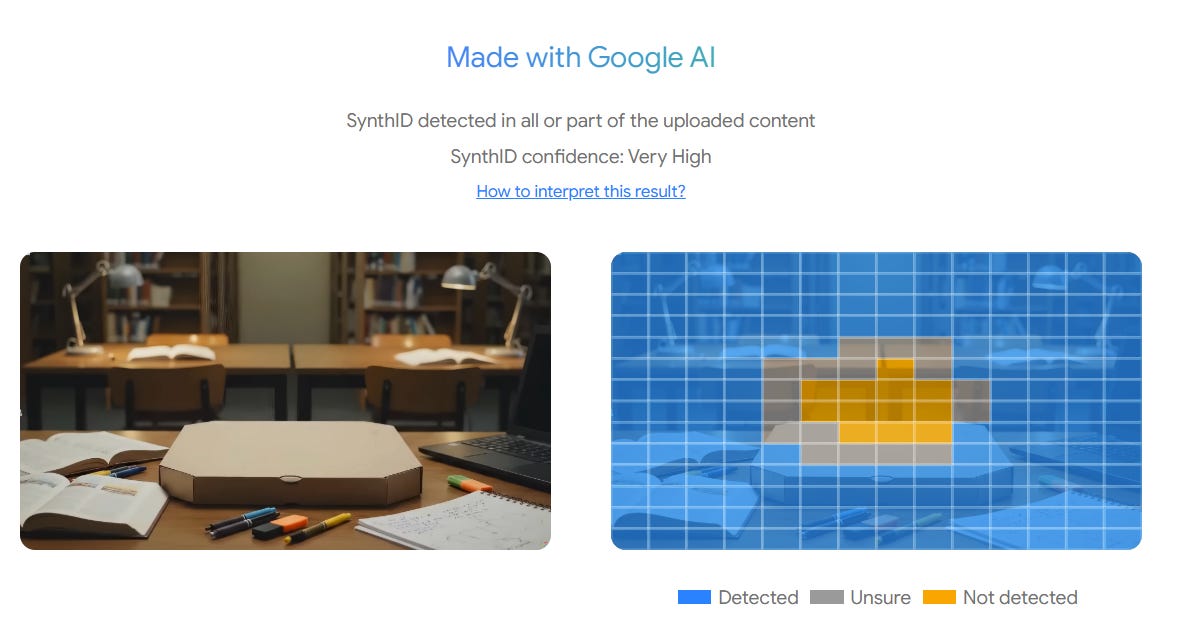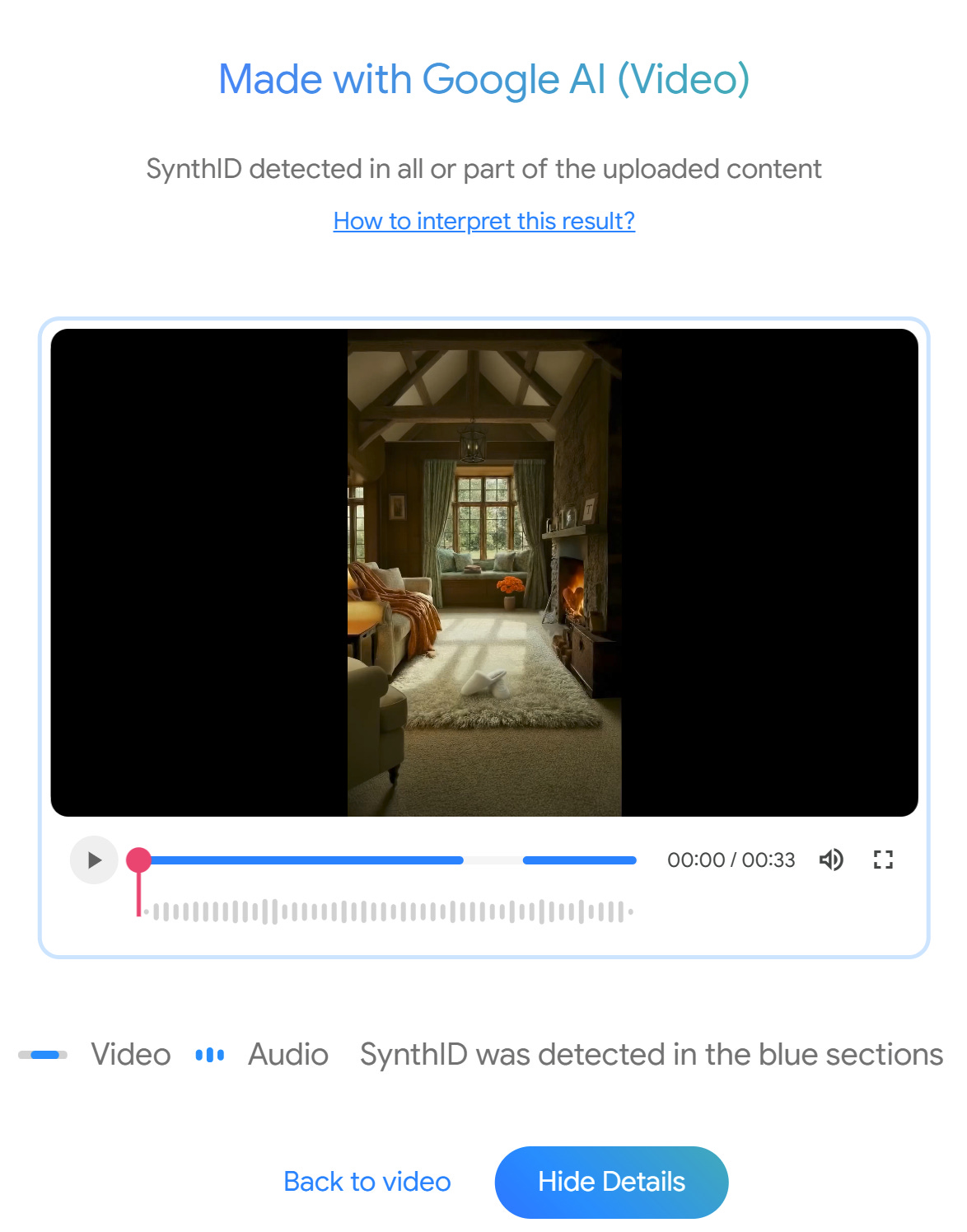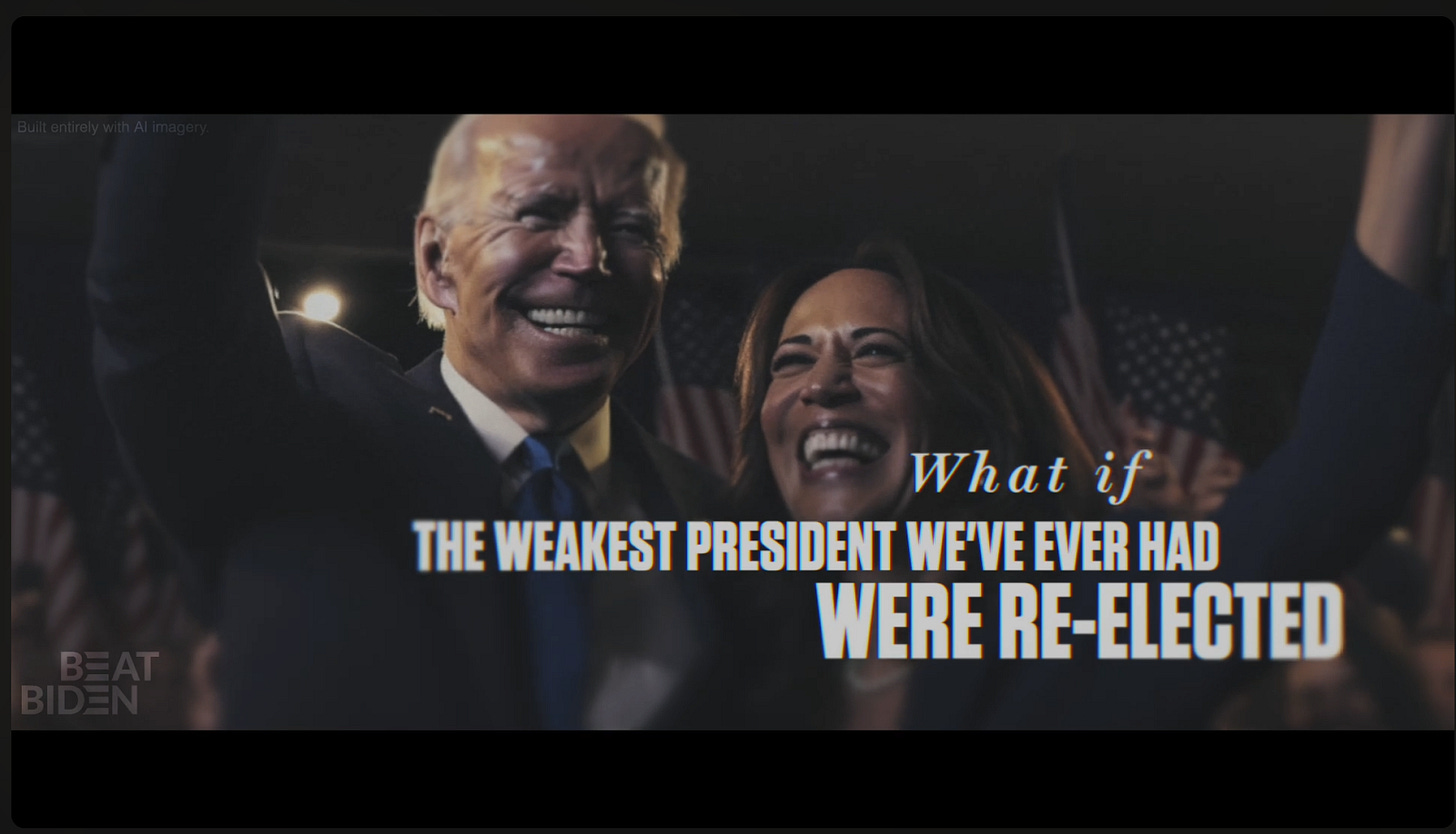AI ads are going mainstream
Why Google, Coca-Cola, and other companies have embraced AI-generated ads.
On October 6, the Internet turned on Taylor Swift. As part of the marketing campaign for her new album, Swift’s team announced a series of 12 short videos hidden across the world on QR codes. These videos, hosted on Taylor Swift’s YouTube account, appeared to be AI-generated. There were certain visual glitches — like messed up text or inconsistent lighting — which clued fans in.
Many fans were mad. Some pointed out that Swift had previously called out AI deepfakes in her 2024 endorsement of Kamala Harris. Self-described Swiftie Alyssa Yung told Rolling Stone, “The most disappointing aspect of this is how utterly hypocritical the use of AI is on Taylor’s project.”
“She’s a BILLIONAIRE. She can afford to pay artists and shoot short videos like those,” one person tweeted. The hashtag #SwiftiesAgainstAI started trending, and several outlets covered the controversy.
However, no one was able to definitively prove that the videos used AI. Swift’s representatives did not reply to media requests, and the story soon died down.
Using a new Google tool called SynthID, I was able to confirm that at least one of Swift’s videos, the “Berlin” video, was made with Google’s video generation tools. The tool works by detecting a watermark that Google hides in AI content generated by its tools. So a positive result is strong evidence that the video was made using a Google AI product. (Swift’s publicist did not respond to a request for comment).
If Taylor Swift — arguably the most famous musician in the world — is using AI to promote an album, the technology has clearly entered the mainstream.
And Swift isn’t alone. AI-generated ads have become more and more prevalent in recent months. Companies large and small have released AI-generated ads — some without even disclosing it.
Others plan to release AI ads soon. A survey by the Interactive Advertising Bureau found that around 30% of digital video ads this year will be made or enhanced using generative AI. The survey predicted that the number will rise to 39% next year.
Some people think it’ll happen even faster.
“I think, realistically, we could be three to four years away to where every ad you see on television is created by AI,” said Kavan Cardoza, a filmmaker who co-founded an AI-based studio, PhantomX.
AI allows companies to generate ads at a fraction of the cost of traditional methods. And while early AI-generated ads sparked some controversy, that backlash doesn’t seem to have been strong enough to stop the trend toward ever more AI-generated ads.
A brief history of AI-generated advertising
Admakers have been experimenting with AI tools for close to a decade, but until recently those experiments were pretty limited:
In 2016, IBM trained a custom machine learning model to select clips for a movie trailer that a human subsequently edited together.
Also in 2016, a Japanese ad agency developed an “AI creative director” to help design ads. Its first project: an ad for Clorets mint tabs.
In 2019, Lexus released an ad whose script had been written by an AI model trained on previous car ads.
In these cases, the use of AI was a gimmick that helped drive interest in the ad. Also, the AI was doing conceptual work — choosing clips, developing concepts, or writing scripts — but it wasn’t generating the actual video content. It’s only in the last couple of years that AI has become sophisticated enough to do that.
One key step came in April 2023, when the Republican National Committee released an attack ad against Joe Biden. Generative AI tools were used to generate still images that appeared in the ad. These images look pretty fake: Biden’s face resembles a wax figure in the frame I screenshotted below. Still, the ad racked up over 350,000 views on YouTube.
The RNC didn’t use AI to generate any video clips because the technology wasn’t ready, as illustrated by this horrifying clip of Will Smith eating spaghetti:
Image and video generation have improved dramatically since then.
In June 2025, the first major viral AI ad aired during the NBA Finals. The ad for the prediction market Kalshi depicted a series of zany scenarios that users could bet on. The ad only cost around $2,000 to make.
That ad was made using Veo 3, a Google-made model released in May 2025. Veo 3 offered substantially improved generation quality and controllability compared to earlier models.
Most consumers don’t seem to mind AI ads
The first few AI-generated ads were controversial. For example, when Coca-Cola released an AI-generated ad last year, it touched a nerve with some artists. Alex Hirsch, the creator of the animated series Gravity Falls, tweeted that “Coca-Cola is ‘red’ because it’s made from the blood of out-of-work artists!”
Undeterred, Coca-Cola released another ad last week. While it also generated some criticism, the reaction seemed quieter this year.
Google’s use of AI-generated ads has attracted even less negative attention. In late October, Google released an ad showing an animated turkey leaving a farm to escape Thanksgiving.
Google didn’t disclose that the ad was AI-generated. Robert Wong, the co-founder of Google’s in-house marketing team, told the Wall Street Journal that consumers don’t care whether an ad was made with AI or not.
Wong might be right. The Wall Street Journal claimed that the turkey ad was Google’s first completely AI-generated ad. In fact, according to SynthID, Google used AI to generate most of the visuals for an earlier ad about using Google as a study tool (If you look closely at the first frame below, you can see that the writing on the notebook looks like gobbledygook). But outside of a few commenters on YouTube, no one seemed to notice.

All this points to a world where AI-generated ads become an increasingly important part of companies’ marketing strategies, even without being disclosed. Given how much faster and cheaper AI can be — Coca-Cola’s CMO told the Wall Street Journal it only took them a month to make their most recent ad compared to a year for a traditional ad — it may be that AI-generated ads will almost completely replace human-filmed ads.
But it might take a while. One reason is that some companies will try to stand out by touting their use of traditional techniques.
For example, BMW recently released a series of ads contrasting its cars with AI-generated slop. One starts with a video of a pigeon skateboarding before revealing that that clip is fake. The voiceover continues, “In a world where it’s hard to tell what’s genuine, it’s nice to know you can trust a BMW certified vehicle.”
Other brands may take a similar approach, trying to position themselves as authentic by not using AI.
The nuts and bolts of AI admaking
Another reason the AI transition won’t happen overnight: AI tools still have significant limitations.
At the low end of the market, some people are probably using fully AI-generated ads—including ads that promote scams. But fully AI-generated ads don’t yet meet the needs of mainstream advertising clients.
AI can generate short video clips that can be hard to distinguish from real footage. But it takes significant human effort to turn a series of these clips into a polished ad.
I talked with PJ “Ace” Accetturo in early October. He runs Genre AI, the AI ad agency that created the Kalshi ad. He told me that his studio uses “the standard production process, just truncated and there’s no live-action shoot.”
After an ad concept has been approved by the client, a writer still writes a script and a director still directs it. However, instead of a human artist making sketches for the storyboard, an “AI cinematographer” uses AI tools to create a sequence of still images. Once the storyboard has been approved, an animator uses AI tools to turn each image into a video clip. A human editor then edits those clips together, does sound design, adds music, and so forth. There’s no need for the writer, director, or editor to be “AI native.”
This process isn’t universal, of course. Another filmmaker who works on AI ads, Kavan Cardoza, said that he sometimes works on “hybrid” ads. In one recent ad, another studio filmed real actors, and then Cardoza used AI for visual effects work.
Human involvement is shifting rapidly. Accetturo told me that Sora 2 is “extremely disruptive” to his business model because it can do an okay imitation of a complete clip with barely any human involvement. For a certain part of the ad market, the whole ad process might become something as simple as a single person typing in a prompt, generating a bunch of outputs, and choosing the best to publish.
In the meantime, AI studios like Accetturo’s are disrupting traditional ad agencies.
The limitations
As we’ve covered before, AI models still make mistakes and model reality incorrectly. Fans identified the Taylor Swift ads as AI-generated because of small glitches in text and the physics of the layout.
Consistency is a particular challenge. Dino Burbido created this graphic of all the different ways that the most recent Coca-Cola ad depicts the company’s trucks. Of the ten clips including trucks, there are eight unique wheel configurations!
To combat this, good ads can take hundreds or thousands of individual generations to produce compelling content — Accetturo called this dynamic “slot-machine pulls.” A high level of human involvement helps to deliver a more consistent vision. But even a large number of generations doesn’t ensure quality — the Coca-Cola ad apparently required more than 70,000 video clips.
Over time, better AI video generation models will probably take care of many of these issues. Already, some of the best AI-generated ads are almost impossible to distinguish from reality, such as this Nike spec ad by Karsten Winegeart.
But even as the quality level rises, making small revisions to generated content may continue to be a challenge. Gille Klabin, an independent filmmaker and director, told me that advertisers are exacting clients. They’ll ask for small tweaks, like rotating the product by ten degrees in a shot, which are impossible to do with current AI tools.
Klabin says “the level of specificity is not there, and the level of hallucinations is a lot.“ Even if you can get the model to rotate the product, maybe it gets the logo wrong.
Accetturo acknowledges that this is a challenge. He says he often tells clients, “Stop nitpicking this. This is an AI ad. It costs less.”
But Accetturo also says that this dynamic influences what types of ads his team will make. His studio specializes in comedy ads, because they require less specificity — and don’t need to feel as authentic. With comedy ads, Accetturo says that audiences think “You’re giving me my dopamine. I’ll watch the ad, this is hilarious.”
Even if a lack of steerability continues for a while, it may not matter if AI-generated content is cheap enough.





Steerability, so fine-grained control of video, will get better. For image generation, AI is already able to review and reflect on what it sees, then adjust only where needed or according to instructions. Sometimes it takes several tries, but it works. Video is harder, of course, but likely doable.
The tech is undoubtedly cool... the effects of this tech on society much less so. Advertising is already 90% slop and with the cost barrier to entry being effectively taken down, are we just going to get more slop? At least in the old slop world, actors and videographers and editors and etc were still being paid... Not trying to rain on this parade, the tech is mind blowing. I just don't know if we're ready for this as a society.